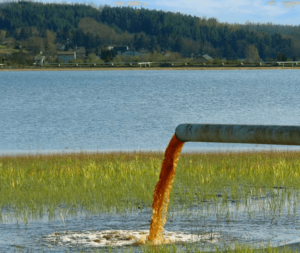
Washington, D.C. – Last night the U.S. Environmental Protection Agency (EPA) announced that it would be rolling back limits on wastewater from coal plants. The limits on coal plants and other steam electric power plants are part of a 2015 Clean Water Act regulation known as the Effluent Limitation Guidelines for steam electric power plants, or the “ELG Rule.” The announcement was made in a filing with the United States Court of Appeals for the Fifth Circuit, which is hearing legal challenges to the merits of the 2015 ELG rule.
“This is exactly what I feared when I saw the agency abandoning the polluter pays principle,” said Betsy Southerland, former Director of the Office of Science and Technology in the EPA Office of Water, which promulgated the ELG rule in 2015. “They are just transferring the costs of polluted water to public and private treatment systems downstream of these plants. Now the public, not the polluter, will have to pay to clean the water. And it is much cheaper to prevent pollution than to clean it up after the fact.”
Coal power plants routinely discharge large quantities of toxic heavy metals and other chemicals. Until 2015, they were operating under outdated standards last revised in 1982. Each year, the industry was discharging over 2 billion pounds of pollutants, including carcinogens and neurotoxins like arsenic, mercury and lead. According to EPA, these pollutants are causing excess cancer and neurological damage in people exposed to contaminated fish. Over 6,000 river miles are unsafe for recreational fishing, and over 10,000 miles are unsafe for subsistence fishing. These pollutants also present serious risks to wildlife and ecosystems.
The ELG rule would have taken a serious bite out of this problem, reducing the most toxic pollutants in wastewater from coal plants by more than 90 percent. This can be accomplished with minimal cost to the regulated industry: According to the EPA, virtually all coal plants subject to the rule should be able to comply at a cost equal to less than 1 percent of revenue. In fact, power plants across the country had already been in the process of complying with the new limits and states were beginning to draft permits that imposed the new limits.
“This is deeply troubling, but it’s not complicated,” said EIP Attorney Abel Russ. “Members of the regulated industry wanted to save a little money, so they asked EPA to let them off the hook. EPA, which is now functioning as a lapdog for polluters, enthusiastically agreed, without thinking twice about the widespread public health impact. This isn’t just another industry – this is the largest industrial source of toxic water pollution in the United States.”
“For over 30 years this industry has benefited from minimal regulatory oversight. By law, they should have been using the best available technology to keep our water clean. That is the standard that EPA is legally required to apply today. Instead, Administrator Scott Pruitt is hell-bent on violating the Clean Water Act and putting the health of our children and our environment at risk. This is unambiguous dereliction of duty. The critical question now is whether the courts will let him get away with it.”
Under Administrator Scott Pruitt, the EPA would set us back 30 years through a series of illegal delays and rollbacks. In April 2017, EPA indefinitely delayed implementation of the rule through an administrative stay that EIP and others have challenged in court. In June, EPA proposed another, parallel stay. Yesterday’s action seeks to indefinitely suspend litigation in the Fifth Circuit over two major waste streams from coal plants, allowing EPA to roll back the limits through a formal rulemaking process.
The EPA specifically announced plans to reconsider the limits on wastewater from bottom ash, from flue gas desulfurization systems (also known as “scrubbers”), and from coal gasification plants. Yesterday’s filing asked the court to “sever and hold in abeyance” all claims related to the three wastestreams identified above, which would allow EPA to re-write those sections of the regulation.
EIP is a plaintiff in the litigation over the merits of the regulation in the Fifth Circuit Court of Appeals, and represents several groups challenging EPA’s illegal stay in the federal district court for the District Court.
Press Contact: Tom Pelton, Environmental Integrity Project, 202-888-2703 or tpelton@environmentalintegrity.org


